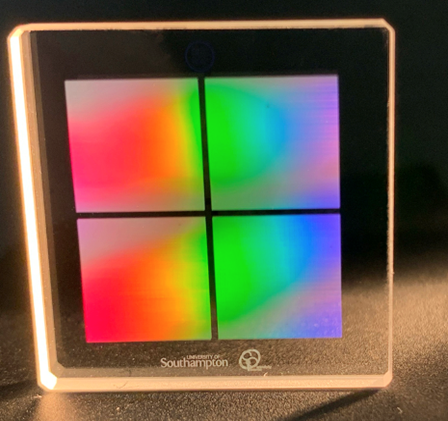
Creating 5D optical data storage 10,000 denser than Blue-Ray
With today’s huge datasets, solving the data storage dilemma is a must. Doctoral researcher Yuhao Lei from the University of Southampton in the UK and his team developed a fast and energy-efficient laser-writing method for producing high-density nanostructures in silica glass. The structures created can be used for long-term five-dimensional (5D) optical data storage more than 10,000x denser than Blue-Ray optical disc storage technology.
Published in Optica, Optica Publishing Group’s journal Lei and colleagues describe their new method for writing data encompassing two optical dimensions plus three spatial dimensions, writing at speeds of 1,000,000 voxels per second, equivalent to recording 230 kilobytes of data per second.
5D optical data storage in transparent materials exists, however writing data fast enough and with sufficient density for real-world applications is challenging. The researchers used a femtosecond laser with a high repetition rate to create tiny pits containing a single nano-lamella-like structure measuring just 500 x 50 nanometers each. They harnessed the light to produce an optical phenomenon known as near-field enhancement to make the nanostructures, minimizing thermal damage, problematic for other approaches that use high-repetition-rate lasers.
The researchers used their new method to write 5 gigabytes of text data onto a silica glass disc about the size of a conventional compact disc with nearly 100% readout accuracy and are now working to increase the writing speed and make the technology usable outside the laboratory. Faster methods for reading the data will also have to be developed for practical data storage applications.
Original Release: Eureka Alert
